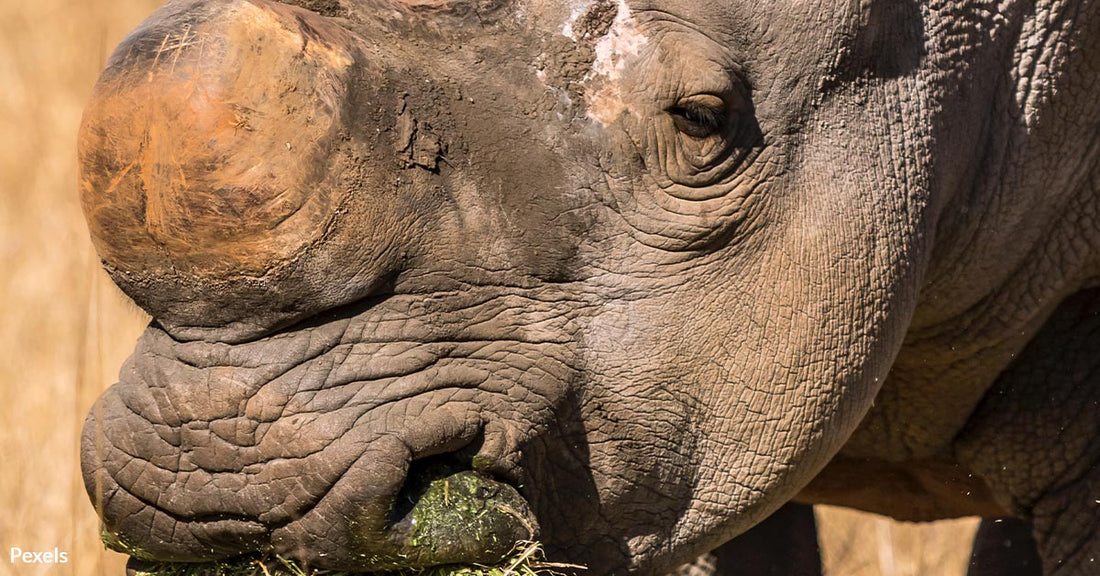The Remarkable Rebound of Africa's White Rhino Population
Matthew Russell
Africa's iconic white rhino, facing the brink of extinction for years, is now staging a remarkable comeback. New data from the International Union for Conservation of Nature (IUCN) reveal that the continent's white rhino population has rebounded for the first time in a decade, marking a significant milestone in the ongoing battle to protect these majestic creatures.
 Photo: Pexels
Photo: PexelsThe white rhino is one of the world's largest land mammals.
The Positive Numbers
At the close of 2022, Africa was home to 23,290 rhinos in total, reflecting a notable 5.2% increase from the previous year, reports ABC News. This encouraging trend is the result of dedicated conservation efforts across the continent, with both black and white rhino populations on the rise. According to WCPO, black rhino populations surged by 4.2%, reaching a total of 6,487, while white rhino populations grew by an impressive 5.6%, totaling 16,803. This is particularly significant because it's the first time since 2012 that the white rhino population has experienced an increase.
A Near-Threatened Species
The white rhino, classified as 'near threatened' on the IUCN's Red List of threatened species, has faced immense challenges over the years. These gentle giants, once numbering in the hundreds of thousands at the dawn of the 20th century, dwindled to a mere 23,290 by the end of 2022, according to IUCN data. However, thanks to intensified protection and management initiatives, there is newfound hope for their survival.
 Photo: Pexels
Photo: PexelsIts name, "white rhino," is derived from the Afrikaans word "weit," meaning wide, describing its wide mouth.
The Impact of Conservation
Conservationists, wildlife organizations, and governments across Africa have worked tirelessly to protect these magnificent creatures.
"The rebounding rhino populations aren't just a win for rhinos, but for the many wildlife species that share their ecosystems and the people who steward these lands," Nina Fascione, Executive Director at the International Rhino Foundation, told ABC News.
"The growing rhino populations are a testament to the effectiveness of collaborative conservation efforts throughout Africa and the resilience of these species."
The Ongoing Threat of Poaching
Despite these positive gains, poaching remains a critical threat to rhinos. The 2023 State of the Rhino report highlights the changing tactics of poachers, who have shifted their focus from the largest rhino populations to more vulnerable ones.
As National Geographic reports, South Africa, home to the continent's largest rhino population, has suffered significant losses due to poaching, forcing large protected areas like Kruger National Park to enhance security measures. In response, poachers have turned their attention to smaller areas like the Hluhluwe Imfolozi Game Reserve, Mongabay reports.
 Photo: Pexels
Photo: PexelsDespite rebounding populations, poaching for rhino horns remains a major threat.
Namibia, home to the world's largest black rhino population, experienced a staggering 93% increase in rhino poaching from 2021 to 2022, reports the Save the Rhino. In response, the U.S. and South Africa launched a joint anti-poaching taskforce, aiming to disrupt illicit trade and support law enforcement efforts.
The Role of Climate Change
Studies show that climate change poses an additional threat to Africa's rhino population. Its impacts on human communities can lead to human-wildlife conflict, increasing the risk of encounters between rhinos and humans. Competition over dwindling water resources may also escalate conflicts between communities and wildlife. As communities grapple with poverty resulting from crop and livestock losses due to climate change, poaching can become an alternative means of income.
 Photo: Pexels
Photo: PexelsAmong all rhino species, southern white rhinos are the only ones not classified as endangered.
Protecting a Precious Legacy
The story of Africa's white rhinos serves as a beacon of hope amid the challenges of conservation.
Rhino populations have persevered for millions of years, and it is our collective responsibility to ensure they do not face extinction on our watch.
As we celebrate the success story of Africa's white rhinos, let us also renew our commitment to protect these incredible creatures, ensuring that they continue to roam the African landscape for generations to come.
By standing together, we can make a difference and help preserve the legacy of these ancient and majestic creatures, ensuring they thrive in the wild once more. The rebound of Africa's white rhino population is a victory for conservation and a testament to the resilience of these magnificent beings.
Click below to make a difference!

